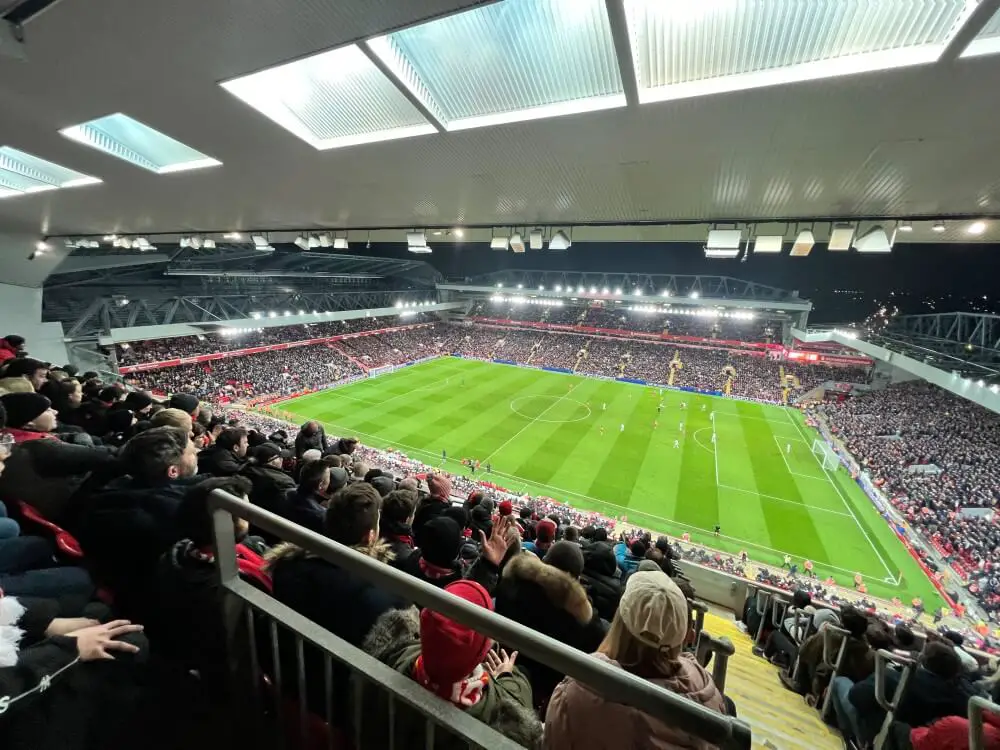In every corner of the world, stadiums and arenas provide the backdrop for the competitions, concerts and cultural events that we all enjoy. But, they are not just mere hosts; in their own right, the two types of building can be highly complex and awe-inspiring structures worthy of attention.
This commonality is clear – however, what is not so clear is the difference between the stadium and arena. After all, if both serve the same purpose and share many structural features then how can we distinguish between them?
With this in mind, let’s explore the question: what are stadiums and arenas different?
In short, the main difference between stadiums and arenas is their respective purposes, sizes and the types of event they typically host. While stadiums are typically bigger in scale due to their vast event space, arenas often host more intimate events with spectators closer to the action. Stadiums are usually outdoor, while arenas are typically indoor venues.
Read on to find out whether stadiums and arenas can mean the same thing, what type of events are usually held at both types of venue, and whether stadiums or arenas are more expensive.
But first, let’s run through the key differences between stadium and arenas in more detail.
Explore our related articles:
How Many People Can Fit Inside a Football Stadium?Why is Madison Square Garden Called a Garden?
Top 10+ Construction Projects in Manchester (2023)
30+ Biggest Indoor Stadiums & Arenas in the World
Top 20+ Oldest Stadiums Still in Use Today
What will Qatar do with the 2022 World Cup Stadiums?
Purpose
First on our list of differences between stadiums and arenas is the specific purposes that both have. While the respective types of venue typically host the biggest live events, their functionalities differ in a few key ways.
Stadiums, on one hand, are usually designed to be large-scale outdoor spaces, which makes it perfect for sports events that require a lot of room, such as football, baseball or cricket. Despite the often vast field of play, stands in stadiums are designed to keep fans close to the action, and often use a tiered seating arrangement in order to do this.
Many stadiums around the world are considered part of the local community, and some have achieved legendary status in their own right. It is more typical for stadiums to only host one club or organisation, which means fans can harbour a certain attachment to the structures.
The same can be said of arenas, but on an arguably smaller scale. After all, arenas are generally more diminutive in stature than the biggest stadiums and are built to be versatile, which means a number of different sports and other events take place in a short space of time.
As such, they tend to host smaller events than stadiums, although this is by no means a general rule. Massive events in sports like ice hockey, basketball and boxing take place primarily in arenas, and musical artists often prefer arenas due to their more intimate setting.
Still, it isn’t necessarily the purpose of arenas to be the biggest and best venues that a town or city has to offer. That status is generally reserved for stadiums.
Size
With this purpose in mind, it’s little wonder that stadiums and arenas differ in terms of size. Of course, there are arenas that are bigger than some stadiums, but at their largest, stadiums typically have more sizeable dimensions.
This correlates to their respective seating capacities. The biggest stadium in the world, the Narendra Modi Stadium in Ahmedabad can seat almost 132,000 people. Meanwhile, the largest arena by capacity, the Philippine Arena in the Philippines, holds room for just 55,000.
Even then, the majority of arenas in top professional leagues such as the NBA and NHL hover around the 20,000 capacity mark, whereas NFL stadiums average around 70,000. Stadiums need to cater for all these spectators, and as such often need to much bigger.

Event space
One of the main reasons why stadiums are bigger than arenas is the increased amount of event space it offers tenants. As mentioned previously, while arenas typically only need to have enough space to hold basketball or ice hockey fixtures, big stadiums usually need to be able to host bigger team sports like football and cricket.
Of course, there are exceptions to this. Dedicated tennis stadiums such as Arthur Ashe Stadium in New York, for example, have a small amount of event space available, while larger arenas such as La Defense Arena have enough event space to host rugby games.
This extends beyond the playing field, too. Due to the sheer amount of spectators that can be present at a large stadium-hosted game, the concourses and surrounding public realm needs to be vaster than it would be at arenas.
And, arenas typically have a more compact event space, with less space between the crowd and the action. With the limited space available, arenas have to maximise the amount of seats that can be offered within the enclosed structure.
Unlike many stadiums, event spaces in arenas are often switched and replaced depending on the event that is occurring. This is also the case with some more modern stadiums, but it’s less common than with arenas.
Roof Structure
There are other physical characteristics of stadiums and arenas that mark a difference between the two. Perhaps the most easily notable distinction is in the roof structures.
Typically, stadiums feature open air or retractable roofs, while the roofs on arenas are usually permanently enclosed. This isn’t always the case – some of the biggest stadiums in the world are permanently covered with a roof structure, although these sometimes have skylights to allow natural light to reach the playing surface.
Arenas are typically built with roofs that cover the entire structure, including the seating sections and playing field. As well as ensuring that sporting events can be protected from turbulent weather, the addition of these roofs means that concerts and other events can make better use of lighting and acoustics. Which brings us onto our next difference…

Acoustics
Put simply, the purpose of stadiums is not ordinarily to put on concerts and other performances. Whereas, one of the main requirements of most modern arenas is that it is able to host such shows.
As a consequence, planners of such arenas place acoustics and sound design at the forefront of their plans. For one, the enclosed structure of arenas allows for natural sound containment and reflection that is not possible with open air stadiums.
As well as this, arenas are typically designed with special materials such as acoustic panels to further enhance the auditory experience. With little external interference, sound can be evenly distributed throughout the arena, meaning every spectator can enjoy the sounds emanating from the stage.
On the other hand, stadiums are designed differently from an acoustic sense. Here, the emphasis is often on boosting the natural ambience of the stadium, amplifying the voices of the fans and creating a frenetic atmosphere.
When it comes to musical performances and other events of the same ilk, however, they are typically not so optimised. To address this, additional sound and PA systems are often employed to allow sound to travel around the venues.
Event Frequency
Due to the design differences between the two, it is also common for arenas to host more events than stadiums over a sustained period of time. This is true for both sporting fixtures and other shows or cultural events.
One of the main reasons for this is that stadiums often have natural grass and special sporting infrastructure that needs to be maintained regularly. It isn’t easy for these venues to convert their event space as it is for arenas, which can usually switch their configurations quickly and easily.
And, should stadiums host special events such as concerts or rallies, it is usually because the event is too big for an arena to handle. This increased capacity means that it takes longer to put the right seating arrangements and safety measures in place.
Unlike stadiums, arenas often have a regular schedule of events, with concerts, touring shows, and sports competitions taking place throughout the year. Their compact size and optimised facilities make it easier to host events on a frequent basis.

Location
Another key difference between stadiums and arenas concerns their respective typical locations. While stadiums are often located on the outskirts of cities, or in suburban regions away from the centre, arenas tend to be situated in the heart of a city.
While this isn’t always the case, it’s not surprising that this is a common occurrence. After all, stadiums are bigger in size and as such require more surrounding infrastructure to be in place. This includes parking spaces, pedestrian walkways and enough entrances to satisfy demand.
Large arenas also face this concern, but due to their compact design, they can fit more easily within the confines of a busy city centre. Often, this means that fans can take advantage of better public transportation options and existing infrastructure to access the venue.
Can a venue be both a stadium and arena?
Although examples are relatively rare, there are many venues around the world that can be labelled as both stadiums and arenas. These are usually large enclosed venues that have the typical characteristics of an arena but the larger size of a stadium.
Some notable examples from around the world include the Tele2 Arena in Stockholm, Sweden and La Defense Arena in Paris, France. In both cases, the seating configuration and event space point to a stadium-style venue, but they are most commonly referred to as arenas.
There are also even larger enclosed venues which may be referred to as arenas, such as Tokyo Dome in Japan and Caesars Superdome in New Orleans. However, in these cases, it’s likely that these would be referred to as indoor stadiums rather than arenas.

Are stadiums or arenas more expensive?
Every stadium or arena construction is different, and as such there is no definitive answer to whether stadiums or arenas are more expensive. As with any construction project, the cost of building a stadium or arena depends on a number of factors, including the scope of the project, the location where it is built and external market conditions.
However, in most cases, due to their larger proportions, stadiums are more expensive to build. This is because it costs more to source, transport and place the materials required for the larger projects, as well as all of the assistive tools and machinery used in construction.
That’s not to say that arenas can’t be hugely expensive projects in their own right. Notable examples of expensive arenas include the Barclays Center in Brooklyn, New York, which cost around $1 billion, and the Chase Center in San Francisco, which had an eye-watering price tag of approximately $1.4 billion.
However, this pales in comparison with the most expensive stadium of all time, which was the 2020-built SoFi Stadium in Los Angeles. This had a whopping $5 billion bill upon completion, making it a far more costly investment than any arena ever built.
Thanks for reading our comparative guide to stadiums vs arenas. While the term stadium and arena can be used somewhat interchangeably, it’s always good to know the difference between two of the world’s most impressive types of building.
Want to know more about the biggest and boldest venues the world has to offer? If so, take a look at some more of our stadium and arenas articles.
Or, if you’d like more definitions on building and architecture vocabulary, take a look at our range of building wikis.
Last Updated on 27 July 2023 by Michael
